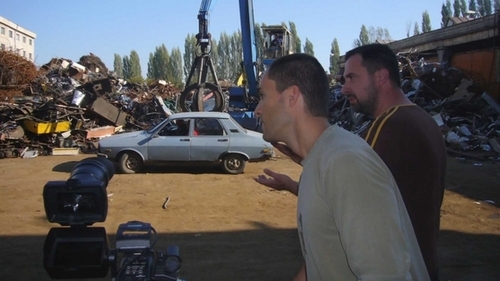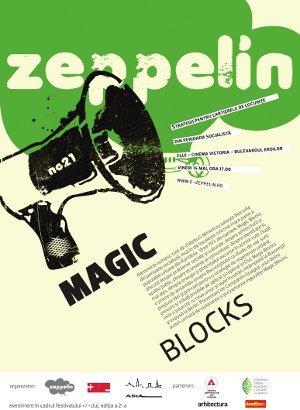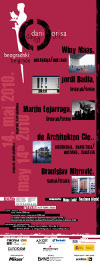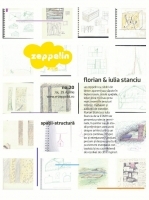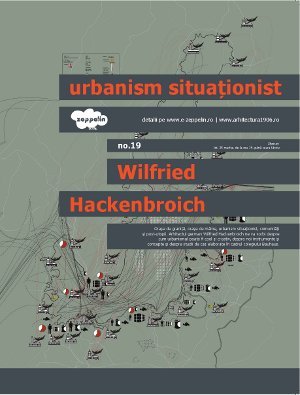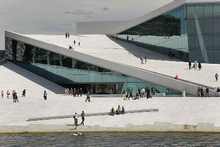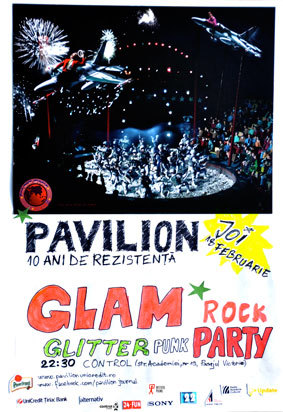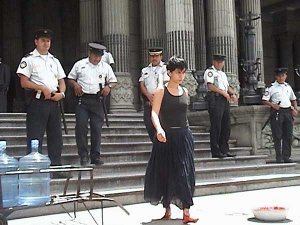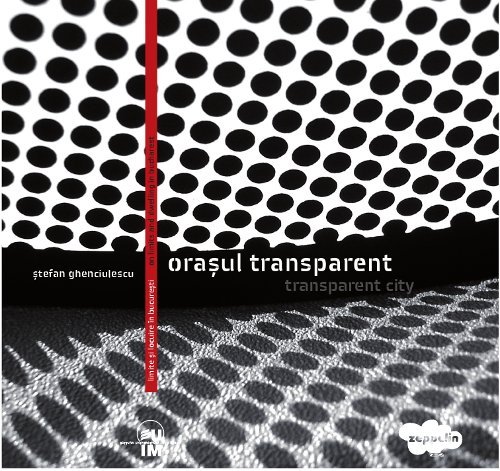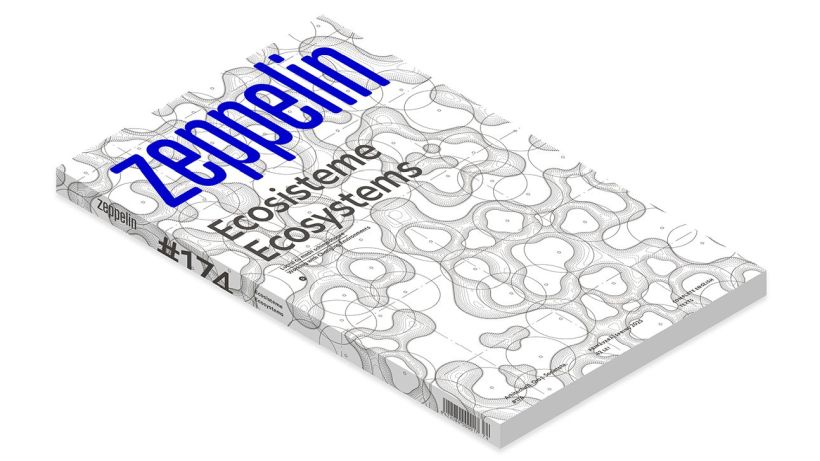My Beautiful Dacia is a light hearted and humoristic portrayal of the evolution of Romania from Communism to Capitalism, seen through the eyes of its most emblematic symbol, the Dacia automobile. “In our film, we will follow different generations of Romanians – from the old nostalgic to the young entrepreneurs – showing the present transformation of Romanian society. The connecting point between the different stories is always the Dacia car: first, a symbol of the ambitions of Communist technology and now a reflection of the new global economy. ” (Julio Soto si Stefan Constantinescu)
- Recommend on FacebookTweet about it
Magic Blocks
Friday, May 14, from 17.00h
Cluj – Cinema Victoria – Bulevardul Eroilor
Speaker: Constantin GoageaScenarios for socialist collective housing estates in Bucharest.
- Recommend on FacebookTweet about it
Belgrade Days of Oris
Opening: 14 May, BelgradeOris magazine continues the tradition of the Days of Oris, presenting for the first time the Belgrade Days of Oris, in Dom Sindikata in Belgrade on 14 May, with start at 14:00.
This event, welcoming some of the greatest names of world architecture and urban planning every year, has put Belgrade on the map of global architectural events and is becoming an unmissable venue for everyone who loves architecture.
The numerous lectures of architects presenting their work and revealing their creative credo enable the visitors to see some of the most important trends in contemporary architecture and to hear some of the most significant architects of our time.
The Days of Oris will not only present the best of world architecture, but also present and promote local and regional contemporary architecture.- Recommend on FacebookTweet about it
A special edition of zeppelin with buildings from rough concrete or digged into massive concrete, spatial cells, plots that are too little or too big, insertions into historical texture, outskirts and transitional suburbs.
Florian Stanciu and Iulia Stanciu from STARH will present completed, under construction or projects that are in preliminary stages; we’ll talk about architecture as a continuous process, about place and the essence of a function, and also about the structure as an essential element of the concept and not as a problem to be solved by the engineers.
- Recommend on FacebookTweet about it
Zeppelin 19
Situationist urbanism
Thursday 25 March from 19h till late
Bucharest, Pavilion Unicredit, 1 Nicolae Titulescu (Victoriei Square)Boundary cities, cities of the future, situationist urbanism, communities and post-utopias. The German architect Wilfried Hackenbroich will tell us how the urbanism can be cool and creative and also about new instruments and concepts and case studies elaborated within the Bauhaus college.
soon more details on www.e-zeppelin.ro- Recommend on FacebookTweet about it
The Norwegian Government proposed one of the most impressive design themes in the past few years, worth more than 500 million EUR. Oslo Opera House was intended not only to become the most important cultural and architectural milestone in Norway, but also to bring a new approach to a classic theme – complete creative freedom in designing a building that has always been strictly dedicated to opera and ballet.
The result was astonishing, due to the fresh design solution and the small “surprises” reserved for the visitors, such as the possibility to have a picnic lunch on the roof of the building. The novelty was also the location itself, as the Opera is located in the city’s harbour. A very audacious technical solution allowed for half of the building to be erected on the surface of the harbour landfill and the other half on water.
- Recommend on FacebookTweet about it
celebrate the resistance in culture…
Thursday, February 18
… with the Comrades Of Time exhibition (PAVILION UNICREDIT, Sos. Nicolae Titulescu nr. 1, orele 19:00) and with the launching of PAVILION #14 – journal for politics and culture. The evening surprise: you are invited to Glam Rock / Glitter Punk Party @ CONTROL (Str. Academiei nr.19 – Pasajul Victoriei) starting 22.30. This party celebrates 10 years of PAVILION, BUCHAREST BIENNALE and PAVILION UNICREDIT’ s existence. It’s been 10 years of hard work, hard times and hundreds of events, lectures, exhibitions, and publications.
FREE ENTRANCE AFTER 22.30www.pavilionjournal.ro / www.pavilionunicredit.ro / www.bucharestbiennale.org
- Recommend on FacebookTweet about it
World Architecture Community Calling
Register and add your projects to worldarchitecture.org before 23 April, become internationally recognizedworldarchitecture.org, the first interactive database created to provide an opportunity for all local practices, invites all World architects to register and upload their projects -for free- until 23 April 2010 to be considered in the scope of 20+10+X Architecture Awards 7th Cycle. Over 200 Honorary Members, including Udo Kultermann, Hans Hollein, Fumihiko Maki, Robert Ivy, Wolf D. Prix, Charles Correa and Michael Sorkin, who may wish to take part in online voting constitute the Final Assessment Panel.
20+10+X Architecture Awards 7th Cycle
Deadline: 23 April 2010- Recommend on FacebookTweet about it
Having been awarded the Golden Lion for Best Young Artist at the Venice Biennale in 2005, Regina José Galindo uses performance and her own body as main devices in the artistic process. Through a kind of re-enactment, the artist substitutes herself to the weak and the humble, to the tortured and the oppressed, staging limit situation. Her own delicate, feminine body is mistreated, in a kind of “self-exposure” and unselfishly substituting herself to various traumas inflicted upon other human beings in oppressive political regimes. Regina José Galindo’s discourse thus relates to other works in the activist area and gender issues with reference to ancestral shamanic myths and exorcising gestures such as Ana Mendieta’s and Sigalit Landau’s, to the rituals of resistance in Tania Bruguera’s and Teresa Margolles’ work: impressive installations over death and the excluded of society.
- Recommend on FacebookTweet about it
This assertion might look obvious; however, most people (and even part of the elites) do not value and do not connect affectively to the city where they live. The poor status of old buildings, the ubiquous mixture of historical parts and valueless wide areas generates a mostly negative image: to many people, Bucharest appears like a city with little history, lacking a special character out of which just a few streets, districts and buildings could be valued. This lack of valorization on behalf of society is just what becomes one of the main factors that have accounted for the past destruction and allows rude interventions nowadays.
- Recommend on FacebookThis website uses cookies to improve your experience. We'll assume you're ok with this, but you can opt-out if you wish.Accept Read MorePrivacy & Cookies Policy
Privacy Overview
This website uses cookies to improve your experience while you navigate through the website. Out of these, the cookies that are categorized as necessary are stored on your browser as they are essential for the working of basic functionalities of the website. We also use third-party cookies that help us analyze and understand how you use this website. These cookies will be stored in your browser only with your consent. You also have the option to opt-out of these cookies. But opting out of some of these cookies may affect your browsing experience.Necessary cookies are absolutely essential for the website to function properly. This category only includes cookies that ensures basic functionalities and security features of the website. These cookies do not store any personal information.Any cookies that may not be particularly necessary for the website to function and is used specifically to collect user personal data via analytics, ads, other embedded contents are termed as non-necessary cookies. It is mandatory to procure user consent prior to running these cookies on your website.

